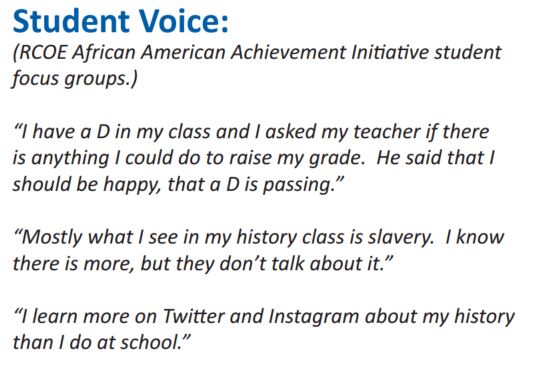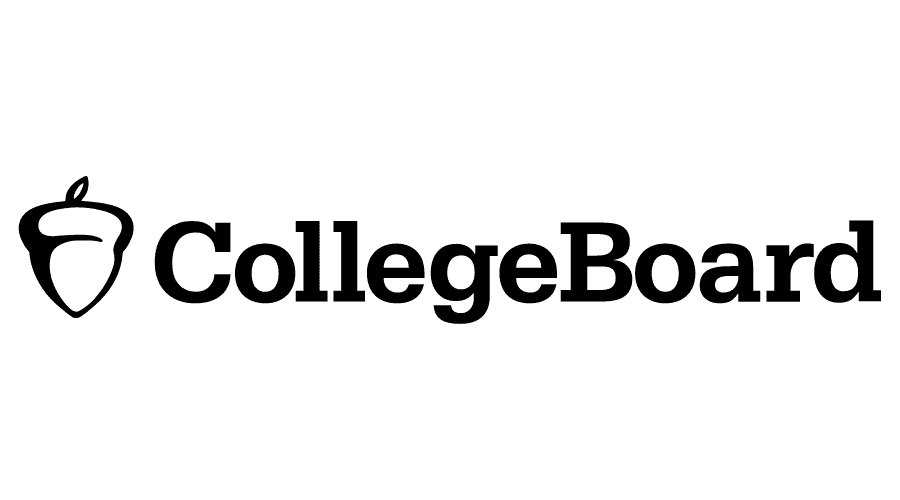BLUEPRINT FOR ACTION
Riverside County Office of Education
The black-white achievement gap started narrowing in the 1970s, but those advances came to a halt in the late 1980s and the gap hasn’t budged since, National Assessment of Educational Progress (NAEP) data show.
Disparities in achievement levels in Riverside County follow patterns similar to those seen across the country: African American students are overrepresented in special education programs, have lower graduation rates than Hispanics and whites, and experience disproportionate rates of suspension and expulsion.
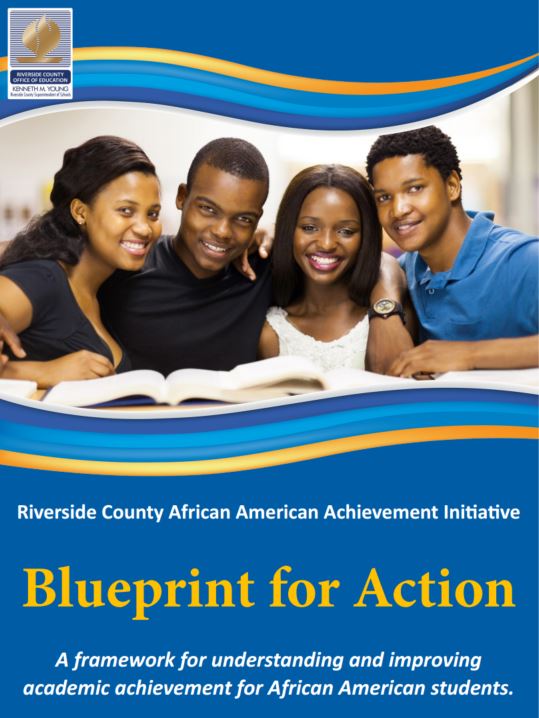 To tackle this problem, in 2013 the Leadership Institute of Riverside County launched a new initiative. The goal of the initiative is to ensure that all African American students in the county achieve the educational outcomes needed to graduate from high school and are prepared for college and the workforce.
To tackle this problem, in 2013 the Leadership Institute of Riverside County launched a new initiative. The goal of the initiative is to ensure that all African American students in the county achieve the educational outcomes needed to graduate from high school and are prepared for college and the workforce.
The Riverside County African American Achievement Initiative (RCAAAI) analyzed local, state and national data and research on best practices to identify actions officials would need to take to achieve the objectives.
Last spring, a Stakeholder Committee for the Initiative released a “Blueprint for Action” designed to provide school districts with research-based actions “that have shown evidence of effectiveness to improve the educational outcomes of African American students.”
To tackle this problem, in 2013 the Leadership Institute of Riverside County launched a new initiative. The goal of the initiative is to ensure that all African American students in the county achieve the educational outcomes needed to graduate from high school and are prepared for college and the workforce.
The Riverside County African American Achievement Initiative (RCAAAI) 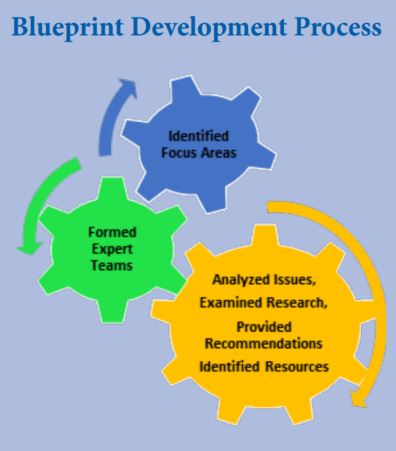 analyzed local, state and national data and research on best practices to identify actions officials would need to take to achieve the objectives.
analyzed local, state and national data and research on best practices to identify actions officials would need to take to achieve the objectives.
Last spring, a Stakeholder Committee for the Initiative released a “Blueprint for Action” designed to provide school districts with research-based actions “that have shown evidence of effectiveness to improve the educational outcomes of African American students.”
The Blueprint is focused on three areas, each aligned with one or more of the eight state priorities of the Local Control and Accountability Plan (LCAP):
1. Increase student engagement and positive connection to school.
2. Foster safe and supportive school environments that ensure high-quality instruction for all African American students.
3. Increase the percentage of parents of African American students that participate in school programs.
The Stakeholder Committee also held focus groups with African American 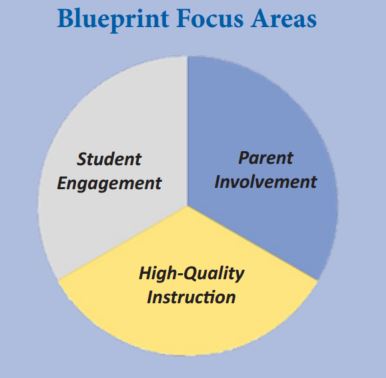 students to help determine its priorities.
students to help determine its priorities.
Cynthia Glover-Woods is the Senior Leadership Associate for Riverside County Office of Education’s Leadership Institute and Coordinator of the effort to develop the Blueprint. She said that to ensure that the Blueprint doesn’t just gather dust on a shelf, “We made sure we went over the document with lots of different groups in detail, outlining the specific recommendations” to make sure they were well understood in the field.
“One thing I shared with the Stakeholder Committee was this: A blueprint is just that. If you’re building a 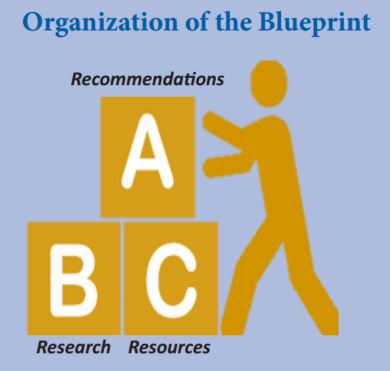 house you don’t stop with the blueprint. It’s incumbent upon us to use it as a guide for our continuing work.”
house you don’t stop with the blueprint. It’s incumbent upon us to use it as a guide for our continuing work.”
In order to ensure the Blueprint for Action remains relevant, “We’re continuing to look at various data sets to make sure the work we’re doing makes a difference for kids in the classroom,” Glover-Woods said. They also plan to do more focus group interviews with students in 2016-17 to see if things are improving.
In addition to hard data, Glover-Woods said she is paying attention to what she sees and hears when she interacts with districts.
“I’m hearing more conversations about how our African American students are doing, and I’m getting a lot of inquiries about items in the Blueprint,” she said.
As a former district assistant superintendent, Glover-Woods said, “I know it’s great to say we’re going to do something, but having research-based resources to carry out the work is what helps us make sure it actually happens.”
The Stakeholder Committee recently looked at how well the LCAPs of all 23 districts in the county were aligned with the Blueprint to determine where there may be gaps to address, she said.
“The heart of what we’re doing is looking at each student group to make sure every student can be successful,” Glover-Woods said.
In order to further their goal of high-quality instruction, for example, they are working with U.C. Riverside’s teacher development program to embed culturally relevant education into the curriculum.
Riverside County Superintendent of Schools Kenneth Young “has been very passionate about the work we’re doing,” Glover-Woods said. “This work is often done at the district level, but not at the county level.”
For more information:
– Find out more about Riverside COE’s Blueprint for Action and download a copy here.
– NAEP data on the black-white achievement gap is available from The Nation’s Report Card.
– The ETS Report, “The Black-White Achievement Gap: When Progress Stopped,” looks at causes for the gap.


